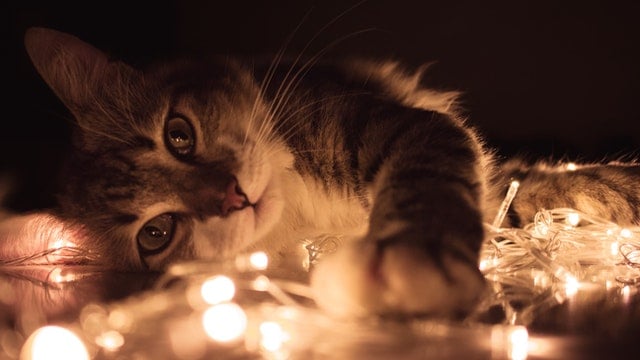
What diseases can affect our cat’s skin? Here’s how to recognize the characteristics of each and how to cure them.
Have you noticed strange spots on your four-legged friend’s skin? Does the cat scratch itself constantly and does his skin appear irritated and red? He may have some dermatological disease, due to infections or allergies that cause him an unbearable itch. It will be the task of the expert to make a diagnosis, identify the cause and find suitable remedies to cure them.
Skin diseases: symptoms
The healthy skin of a cat is generally pink or black, depending on the pigments that characterize the cat’s breed and its genetic make-up. Identifying the signs of a feline dermatological problem is essential for its care: irritated or reddened skin, in addition to the characteristic intense pink-red color, can have lesions, growths, crusts and areas of alopecia, therefore devoid of hair. Especially when the hair falls out, the underlying skin is an intense pink and warm to the touch, as it is more ‘fresh’. It is equally important not to stop to assess the condition of the skin, but also to note the related symptoms that appear at the same time as the others. These can be:vomiting, nausea, walking and balance problems, lethargy and cramps. Here are the main pathologies affecting the cat’s skin.
Cat skin diseases
Unfortunately, cats are easily susceptible to skin diseases, and the causes can be various: from the presence of mites and parasites, to allergies, to bacterial infections up to more serious cases such as skin cancers and systemic diseases. The coat of the healthy cat is usually smooth, without encrustations and above all uniform: there are no empty areas. When the cat loses its hair it can be the moult: the important thing is to prevent any problems with the coat by taking care of the hair regularly. In addition to keeping the coat smooth and tidy, brushing it also serves to prevent the cat from vomiting due to the hairballs it ingests.
Cat skin diseases: dermatitis
It is among the first skin diseases that afflict but there are different types: from flea allergy, food allergy, atopic or stress dermatitis. The first dermatitis, caused by the saliva of flea bites on the coat, is common in stray or outdoor cats. Food allergy, on the other hand, naturally concerns food, even if in life he had already tasted the same type of food. To understand what the offending food is, the cat will have to be subjected to a diet for about 12 weeks.
Atopic dermatitis, on the other hand, is a reaction of the cat’s skin to an element present in the environment, such as pollen, mold or grass. It will be difficult to diagnose the type of dermatitis as cats would be very sensitive to any allergens from any skin tests we would have them undergo. Affected cats may also have other symptoms such as chronic coughing, sneezing, and even conjunctivitis. For difficult cases, pharmacological therapy is recommended , which the veterinarian will normally prescribe, while in more serious cases, a hyposensitization or immunotherapy specific to the allergen in question could be recommended.
Finally, stress dermatitis is caused by the same cat that constantly licks and bites its skin. These self-inflicted injuries can lead to infections, which will be even more annoying for the feline. The situations that cause stress in the cat can be linked to: moving, traveling, loss of owner or the arrival of a newcomer at home.
Finally, solar dermatitis is caused by excessive exposure to the sun that damages the most delicate and hairless areas, in particular the ears, eyelids, nose and lips. It causes redness, cracks and then hair loss: if the cat scratches itself with its nails it worsens the situation. It is absolutely necessary to avoid direct contact with the sun, to use creams and protections, and in extreme cases to evaluate a surgical intervention.
Cat skin diseases: parasites
Heat can dry out the skin and itchy, but fleas, mites and ticks are usually the most common cause. In particular, if we notice that the cat tilts its head and shakes it often, it is likely that it has an ear discomfort. We observe the inside of the ear canal and exclude the presence of brown or waxy secretions, due to the presence of mites. In this regard, there are specific ear drops that will kill the mites and clean the ear canal.
Cat skin diseases: abscesses
What are abscesses? Pus -filled blisters that form after a scratch or an insect bite. At first they appear as a hard, painful lump that gradually softens due to internal secretions, which will begin to leak. For this type of problem, antibiotic therapies and a local treatment solution are prescribed.
Cat skin diseases: feline acne
Like humans, cats can also suffer from acne: it shows blackheads on the chin and near the lips. Pustules, edema, swollen glands and consequent itching can occur in these areas. As in the case of the young man, even for cats there are anti-seborrheic cleansers, which contain benzoyl peroxide or benzoyl peroxide gel.
Cat skin diseases: psychogenic alopecia
When the cat licks itself continuously, it risks removing a part of the fur from its coat, usually on the back or abdomen. The stressed cat usually licks too much, so to resolve this type of alopecia it is necessary to reassure the cat. In this regard, there are products on the market that emit feline pheromones, to be sprayed into the environment and make it more peaceful for the feline.
Cat skin disease: ringworm
Among the zoonoses it is the most feared because it is also dangerous for humans: ringworm is caused by fungi that corrode the skin. In particular, young cats or cats with an already weakened immune system are at risk: usually stray cats are affected, precisely because they are not subjected to periodic visits to the veterinarian. Like ringworm, ringworm is also one of these: the cat’s coat will have areas without hair and greyish scales. It is among the zoonoses because it is transmissible to humans but fortunately it is treatable.
Cat skin diseases: mange
The cat scratches itself compulsively because it is itchy, its coat has scabs and the hair is lost in patches, let’s be careful: these are the symptoms of mange. It is caused by a mite and can be transmitted to other animals and also to humans. Fortunately it is treatable: just get advice from the vet.
Cat skin diseases: what to do

A healthy and balanced diet, medical therapies and vet checks will keep the dangers away from your cat. For allergies, of course, it is essential to understand what the triggering allergen is and to keep it away from the cat. Allergies can be time consuming and annoying to treat, however the results are often optimal: the cat will be back as before!
The fundamental opinion is that of the veterinarian: he will be the only one able to formulate a correct diagnosis of the problem. The owner’s task will be only to cuddle and calm the cat while waiting for the response and the recommended care. Better to keep him away from sources of stress, avoid things that irritate him such as car trips or living with other animals.






